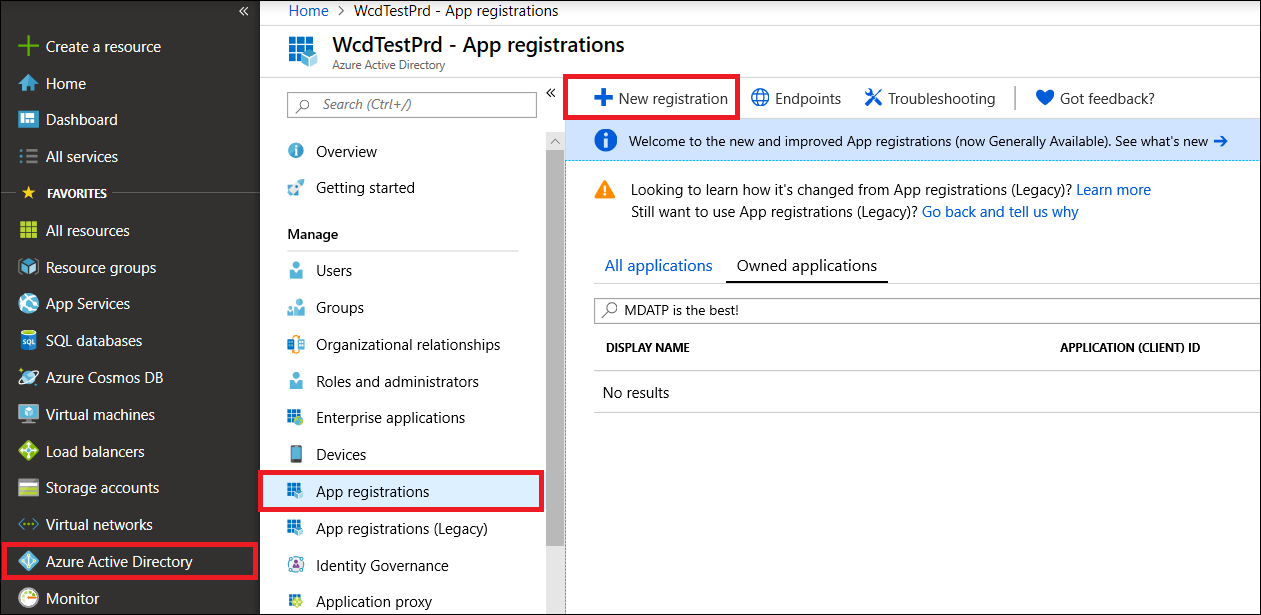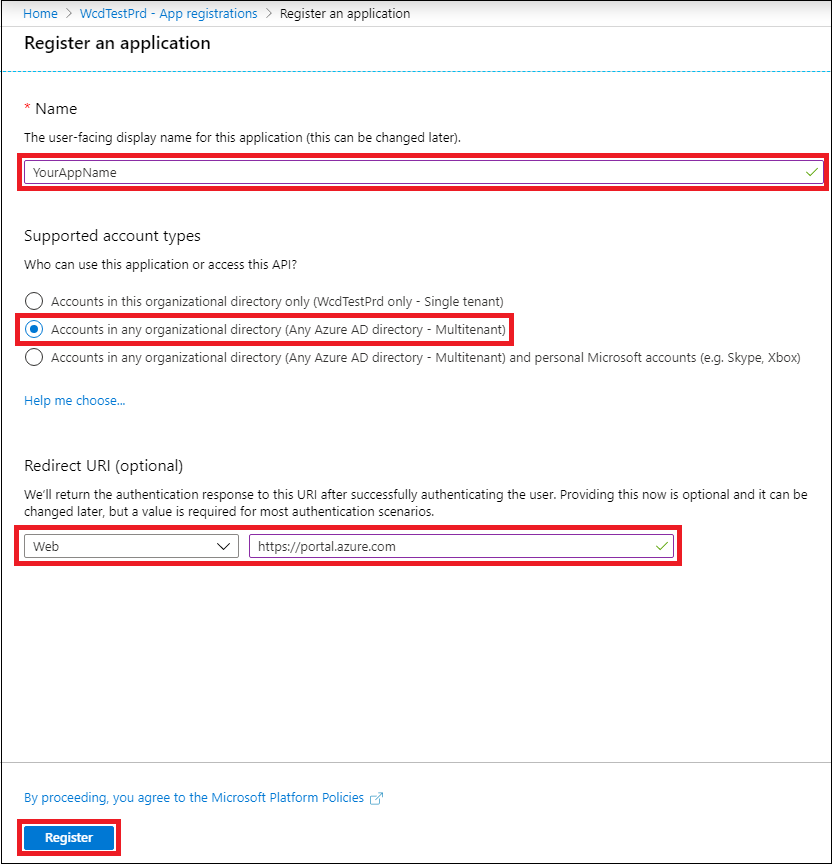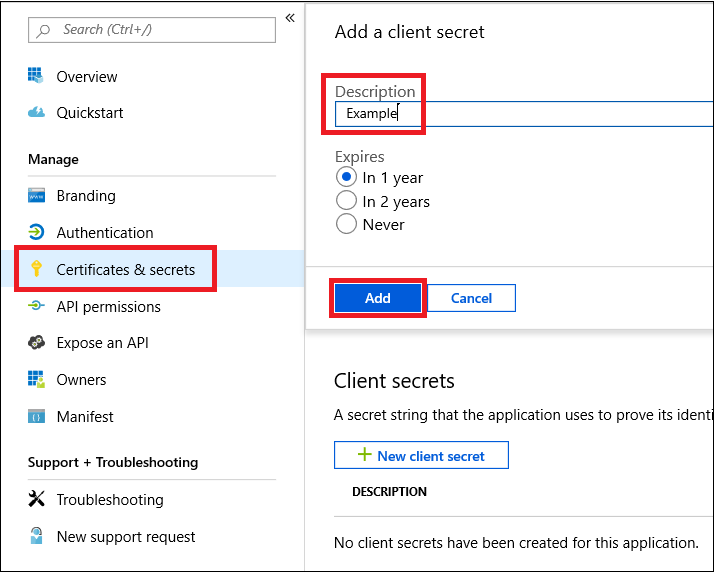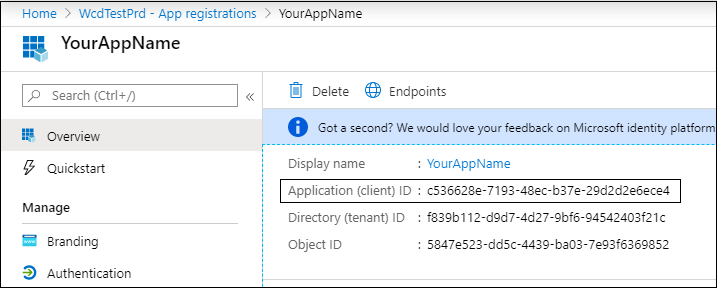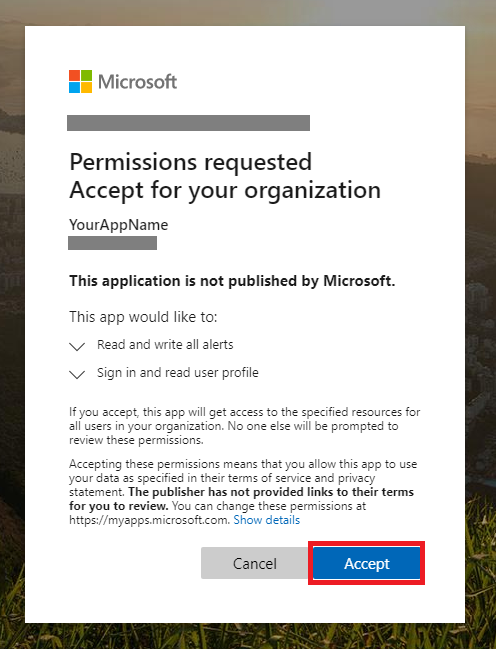Partner access through Microsoft Defender for Endpoint APIs
Applies to:
- Microsoft Defender for Endpoint Plan 1
- Microsoft Defender for Endpoint Plan 2
- Microsoft Defender for Business
Important
Advanced hunting capabilities are not included in Defender for Business.
Want to experience Microsoft Defender for Endpoint? Sign up for a free trial.
Note
If you are a US Government customer, please use the URIs listed in Microsoft Defender for Endpoint for US Government customers.
Tip
For better performance, you can use server closer to your geo location:
- us.api.security.microsoft.com
- eu.api.security.microsoft.com
- uk.api.security.microsoft.com
- au.api.security.microsoft.com
- swa.api.security.microsoft.com
- ina.api.security.microsoft.com
This page describes how to create a Microsoft Entra application to get programmatic access to Microsoft Defender for Endpoint on behalf of your customers.
Microsoft Defender for Endpoint exposes much of its data and actions through a set of programmatic APIs. Those APIs help you automate work flows and innovate based on Microsoft Defender for Endpoint capabilities. The API access requires OAuth2.0 authentication. For more information, see OAuth 2.0 Authorization Code Flow.
In general, you need to take the following steps to use the APIs:
Create a multi-tenant Microsoft Entra application.
Get authorized(consent) by your customer administrator for your application to access Defender for Endpoint resources it needs.
Get an access token using this application.
Use the token to access Microsoft Defender for Endpoint API.
The following steps guide you how to create a Microsoft Entra application, get an access token to Microsoft Defender for Endpoint and validate the token.
Important
Microsoft recommends that you use roles with the fewest permissions. This helps improve security for your organization. Global Administrator is a highly privileged role that should be limited to emergency scenarios when you can't use an existing role.
Create the multitenant app
Sign in to your Azure tenant.
Navigate to Microsoft Entra ID > App registrations > New registration.
In the registration form:
Choose a name for your application.
Supported account types - accounts in any organizational directory.
Redirect URI - type: Web, URI: https://portal.azure.com
Allow your Application to access Microsoft Defender for Endpoint and assign it with the minimal set of permissions required to complete the integration.
Request API permissions
To determine which permission you need, review the Permissions section in the API you want to call. For instance:
- To run advanced queries, select the Run advanced queries permission.
- To isolate a device, select the Isolate machine permission.
In the following example we use Read all alerts permission:
Choose Application permissions > Alert.Read.All > select on Add permissions
Select Grant consent
- Every time you add permission you must select on Grant consent for the new permission to take effect.
Add a secret to the application.
- Select Certificates & secrets, add description to the secret and select Add.
After you select Add, make sure to copy the generated secret value. You won't be able to retrieve it after you leave!
Write down your application ID:
Add the application to your customer's tenant.
You need your application to be approved in each customer tenant where you intend to use it. This approval is necessary because your application interacts with Microsoft Defender for Endpoint application on behalf of your customer.
A user account with appropriate permissions for your customer's tenant must select the consent link and approve your application.
The consent link is of the form:
https://login.microsoftonline.com/common/oauth2/authorize?prompt=consent&client_id=00000000-0000-0000-0000-000000000000&response_type=code&sso_reload=trueWhere
00000000-0000-0000-0000-000000000000should be replaced with your Application ID.After selecting the consent link, sign into the customer's tenant, and then grant consent for the application.
In addition, you'll need to ask your customer for their tenant ID and save it for future use when acquiring the token.
Done! You successfully registered an application! See the following examples for token acquisition and validation.
Get an access token example
To get access token on behalf of your customer, use the customer's tenant ID on the following token acquisitions.
For more information on Microsoft Entra token, see Microsoft Entra tutorial.
Using PowerShell
# That code gets the App Context Token and save it to a file named "Latest-token.txt" under the current directory
# Paste below your Tenant ID, App ID and App Secret (App key).
$tenantId = '' ### Paste your tenant ID here
$appId = '' ### Paste your Application ID here
$appSecret = '' ### Paste your Application key here
$resourceAppIdUri = 'https://api.securitycenter.microsoft.com'
$oAuthUri = "https://login.microsoftonline.com/$TenantId/oauth2/token"
$authBody = [Ordered] @{
resource = "$resourceAppIdUri"
client_id = "$appId"
client_secret = "$appSecret"
grant_type = 'client_credentials'
}
$authResponse = Invoke-RestMethod -Method Post -Uri $oAuthUri -Body $authBody -ErrorAction Stop
$token = $authResponse.access_token
Out-File -FilePath "./Latest-token.txt" -InputObject $token
return $token
Using C#
Important
The Microsoft.IdentityModel.Clients.ActiveDirectory NuGet package and Azure AD Authentication Library (ADAL) have been deprecated. No new features have been added since June 30, 2020. To upgrade, see the migration guide.
Create a new Console Application.
Install NuGet Microsoft.Identity.Client.
Add the following using code:
using Microsoft.Identity.Client;This code was tested with NuGet
Microsoft.Identity.Client.Copy/Paste the following code in your application (don't forget to update the three variables:
tenantId,appId, andappSecret).string tenantId = "00000000-0000-0000-0000-000000000000"; // Paste your own tenant ID here string appId = "11111111-1111-1111-1111-111111111111"; // Paste your own app ID here string appSecret = "22222222-2222-2222-2222-222222222222"; // Paste your own app secret here for a test, and then store it in a safe place! const string authority = https://login.microsoftonline.com; const string audience = https://api.securitycenter.microsoft.com; IConfidentialClientApplication myApp = ConfidentialClientApplicationBuilder.Create(appId).WithClientSecret(appSecret).WithAuthority($"{authority}/{tenantId}").Build(); List<string> scopes = new List<string>() { $"{audience}/.default" }; AuthenticationResult authResult = myApp.AcquireTokenForClient(scopes).ExecuteAsync().GetAwaiter().GetResult(); string token = authResult.AccessToken;
Using Python
Using Curl
Note
The following procedure supposed Curl for Windows is already installed on your computer
Open a command window.
Set
CLIENT_IDto your Azure application ID.Set
CLIENT_SECRETto your Azure application secret.Set
TENANT_IDto the Azure tenant ID of the customer that wants to use your application to access Microsoft Defender for Endpoint application.Run the following command:
curl -i -X POST -H "Content-Type:application/x-www-form-urlencoded" -d "grant_type=client_credentials" -d "client_id=%CLIENT_ID%" -d "scope=https://securitycenter.onmicrosoft.com/windowsatpservice/.default" -d "client_secret=%CLIENT_SECRET%" "https://login.microsoftonline.com/%TENANT_ID%/oauth2/v2.0/token" -kYou get an answer that resembles the following code snippet:
{"token_type":"Bearer","expires_in":3599,"ext_expires_in":0,"access_token":"eyJ0eXAiOiJKV1QiLCJhbGciOiJSUzI1NiIsIn <truncated> aWReH7P0s0tjTBX8wGWqJUdDA"}
Validate the token
Confirm you received a correct token.
Copy/paste into JWT the token you get in the previous step in order to decode it.
Confirm you get a roles claim with the appropriate permissions.
In the following screenshot, you can see a decoded token acquired from an Application with multiple permissions to Microsoft Defender for Endpoint:
The "tid" claim is the tenant ID the token belongs to.
Use the token to access Microsoft Defender for Endpoint API
Choose the API you want to use. For more information, see Supported Microsoft Defender for Endpoint APIs.
Set the Authorization header in the Http request you send to
Bearer {token}(Bearer is the Authorization scheme). The Expiration time of the token is one hour (you can send more than one request with the same token).Here's an example of sending a request to get a list of alerts using C#:
var httpClient = new HttpClient(); var request = new HttpRequestMessage(HttpMethod.Get, "https://api.securitycenter.microsoft.com/api/alerts"); request.Headers.Authorization = new AuthenticationHeaderValue("Bearer", token); var response = httpClient.SendAsync(request).GetAwaiter().GetResult(); // Do something useful with the response
See also
- Supported Microsoft Defender for Endpoint APIs
- Access Microsoft Defender for Endpoint on behalf of a user
Tip
Do you want to learn more? Engage with the Microsoft Security community in our Tech Community: Microsoft Defender for Endpoint Tech Community.
